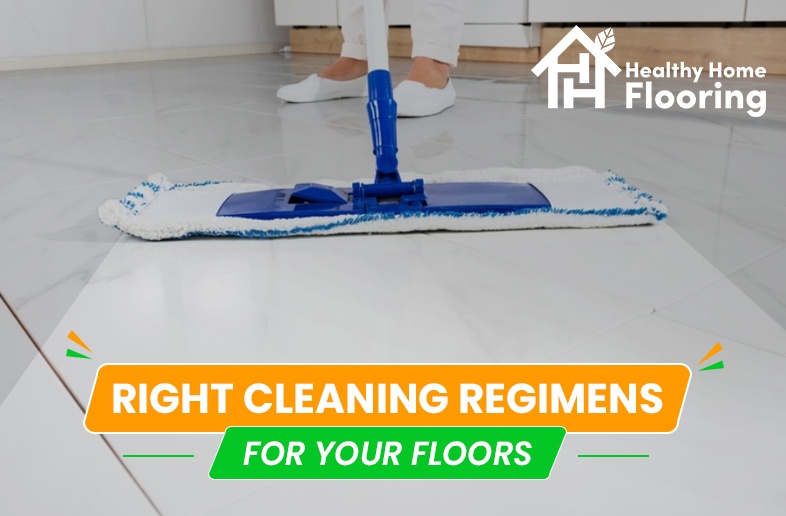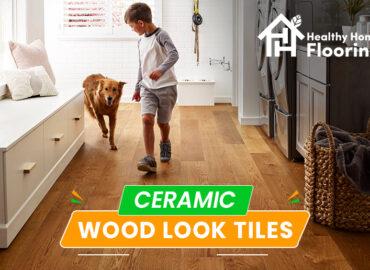Cleaning a floor seems like a simple enough task not to warrant any sort of specialization. However, not many people are aware that cleaning floors involve more than just a bucket of water and a rag. This lack of specialized know how often leads to ruined flooring, which may require costly and time-consuming repair or replacement. If you’re a homebody who’s keen on keeping flooring looking pristine, but is also cautious enough to want to make it last for as long as possible in as flawless a way as can be, you might want to look into these ten points you must consider before opting for any floor cleaning methods:
Know the Type of Flooring
The first step to cleaning floors is to identify the type of flooring you have at home since the proper identification of flooring is the deciding factor for the method of cleaning that can and cannot be undertaken. Here are the top eight standard flooring types that can be found in some homes:
#Vinyl Flooring
– A low-cost, easy-to-maintain flooring that comes in a wide assortment of different designs; it is renowned for being ‘indestructible’. If improperly cared for, however, it can still be still be torn and scratched or can peel off of its backing with age and general wear-and-tear.
#Linoleum Flooring
–The grandfather of vinyl, linoleum is made from organic materials and is reputed to be hypoallergenic. It was a popular all-around flooring material during the latter parts of the 1890s until well into the heyday of the 1960s, until it slowly fell out of public favor due to its somewhat delicate nature.
#Laminate Flooring
– Laminate floors are what slowly replaced vinyl and linoleum as commonplace flooring choices for folks on a budget. Notorious for the way it can imitate the look of stone or wood, it is made from fiberboard or molded melamine. Laminate floors, unfortunately, don’t work well under heavy traffic because they have a tendency to become easily scratched.
#Cork Flooring
– Marketed as a more eco-friendly alternative to wooden floors, cork flooring is nothing short of stunning. However, cork floors are quite finicky and difficult to maintain and may require specialized cleaning and upkeep. They also do not work well in high-traffic areas due to its soft nature.
#Wood Flooring
– Wood has been the go-to flooring material for ages. Valued for its durability and beauty, it is long-lasting, albeit quite finicky when it comes to upkeep. It comes in two distinct variations – softwood and hardwood and can be stained or finished in a myriad of ways.
#Stone Flooring
– Stone flooring is one of the oldest types of flooring available. Considered a luxury item even back in the day, there’s a wide array of different stones, each with their own specific maintenance requirements, making stone flooring a worthwhile, but delicate investment.
#Tile Flooring
– Tile is a very old flooring type just as old as stone and wood. Easy to clean, low-maintenance, and nowadays, quite cheap, it is an excellent alternative to the pricier stone flooring or the more delicate and equally pricey hardwood floors.
#Carpeted Floors
– While carpets aren’t exactly a flooring type, they are a common material used for a wide assortment of flooring. Ranging from cheap to extremely expensive, they’re in a league all their own when it comes to general maintenance and cleaning.
Know Your Cleaning Implements
Floor cleaning methods and tools run the gamut from manual to automated and specialized tools. While the standard repertoire of cleaning materials include a broom and dustpan, a bucket, a mop or rag, and a sponge, other tools like squeegees, microfiber cloth, and chamois can also be used. Beyond this, steam cleaners, buffers or polishers, and vacuum cleaners belong to the more ‘specialized’ department.
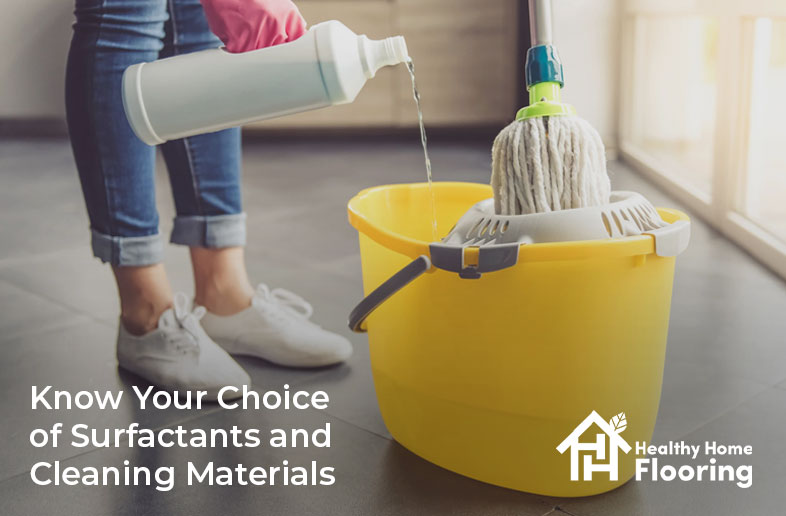
Know Your Choice of Surfactants and Cleaning Materials
Surfactants and other cleaning materials can be a difficult area to traverse when it comes to floor cleaning. Thankfully, there’s a short guide to knowing what should be used for what:
#Vinyl
– Dish soap and warm water to remove grease and stains. Can be easily wiped down with a regular or microfiber mop. Diluted bleach or steam cleaning can opt for if deep cleaning is necessary.
#Linoleum
– Hot water or a combination of hot water and mild soap.
#Laminate
– Avoid surfactants as much as possible. Opt for dry mopping and regular sweeping or vacuuming. If necessary, a slightly damp cloth dipped in a mild solution of water and dish-soap or a heavily diluted solution of water and bleach can be used to treat problematic stains.
#Cork
– Try to avoid wet-cleaning procedures, preferring sweeping and vacuuming instead. If necessary, clean with a solution of 1/4th cup vinegar and one drop of mild dish soap.
#Wood
– choice of surfactant will vary depending on finish. Avoid wet cleaning on waxed wood, instead opting for frequent dry mopping, vacuuming, sweeping and buffing. Apply polish when finish dulls. For polyurethane-sealed wood, wet mopping with mild detergent, and a quick rub-down with a dry cloth will suffice.
#Stone
– Avoid the use of all acidic and corrosive substances like vinegar, bleach, and ammonia. Can be cleaned with just hot water and maintained with regular wet mopping. Steam cleaners work wonders for stone, as do mild buffers.
#Tile
– Allows for nearly all types of cleaning surfactants. Can benefit from occasional steam cleaning and buffing.
#Carpet
– spot-cleaning can be done with a solution of laundry detergent or baking soda and warm water. For deep-seated stains, professional help is necessary. Can benefit from occasional steam cleaning and frequent vacuuming.

Manual v. s. Mechanical
Some floors are best cleaned using manual methods, while others are better handled using mechanical assistance. In some cases, a combination of manual and mechanical cleaning offers the best results.
#Manual cleaning
– floor types such as linoleum, laminate, and cork benefit the most from careful manual cleaning.
#Mechanical cleaning
– tile and vinyl may be cleaned manually, but mechanical methods work more efficiently.
#Combined methods
– wood, stone, and carpet flooring types work best with a combined approach of regular manual cleaning and occasional mechanical deep-cleaning.
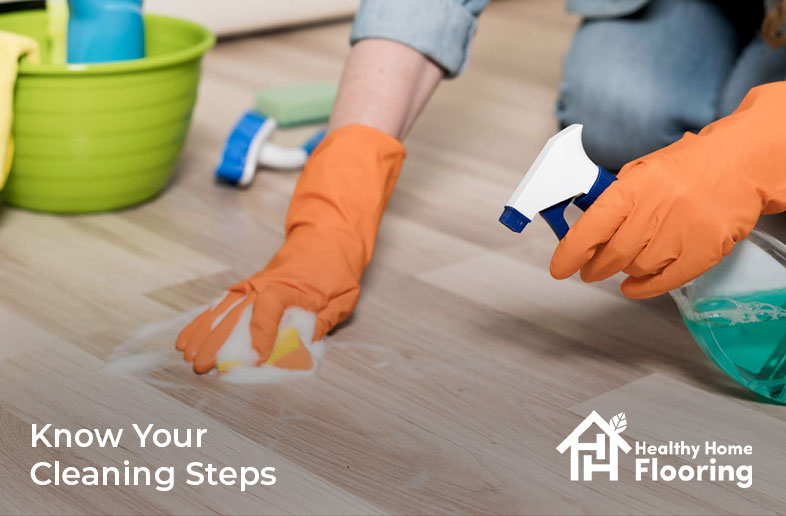
Know Your Cleaning Steps
#Vinyl
Step One: Sweep or vacuum the floor to remove any dry contaminants.
Step Two: Wet-mop the floor with a combined solution of 1/4th cup vinegar and a drop or two of dish soap in some warm water. You can use a spray bottle for spot cleaning, or a bucket of solution with a wet mop for faster application.
Step Three: Wipe dry with a clean microfiber or linen cloth.
Optional Steps: The occasional deep-cleaning with a steam cleaner and some mild buffing with a soft buffer may be done.
#Linoleum
Step One: Sweep or vacuum the floor to remove any dry contaminants. Be careful to avoid scratching the surface.
Step Two: Combine mild dish soap with some hot water and spritz around the area, making sure to work in small sections. Wet mopping large sections should be avoided to prevent damage.
Step Three: Immediately wipe the section being cleaned with a dry microfiber cloth or a dry mop. Be sure to wipe down meticulously to avoid stickiness.
#Laminate
Step One: Regularly sweep or vacuum floor to remove dry contaminants.
Step Two: Dry-mop frequently to retain shine.
Occasional Steps: For deep-seated stains, clean with soft, damp cloth and immediately wipe the area dry.
#Cork
Step One: Sweep or vacuum to remove dry contaminants. Overall cleaning can be achieved with just regular sweeping or vacuuming and dry-mopping.
Step Two: A weekly or bi-weekly deep-cleaning with a solution of a 1/4th cup of vinegar and some dish soap in warm water, or a combination of warm water and 1/4th teaspoon of baking soda can be spritzed on the floor should suffice. When wet cleaning, be sure to wipe dry as you go.
#Wood
Step One: Identify the finish and type of wooden flooring.
Step Two: Regularly sweep or vacuum to remove dust and dry contaminants.
Step Three: Wet-mop with a damp cloth or mop and a solution of warm water and baking soda, or a combination of mild dish soap and 1/4th cup of vinegar for polyurethane-sealed wood. Wax-sealed and unsealed wood should only be dry-mopped and swept clean on a regular basis.
Optional Steps: Wax-polished wood may be manually buffed to a shine and waxed to improve resistance to scratches and water damage.
#Stone
Step One: Sweep or vacuum regularly to remove dry contaminants.
Step Two: Wet-mop with a solution of hot water and mild, non-chelating cleanser or plain hot-water and 1/4th teaspoon of baking soda.
Step Three: Dry-mop with microfiber cloth immediately after.
Optional Steps: Steam cleaning may be opted for weekly or bi-weekly for deep cleaning. Steam cleaners may also be employed in lieu of manual cleaning for faster results.
#Tile
Step One: Sweep or vacuum regularly to remove dry contaminants.
Step Two: Employ your choice of surfactant (bleach, detergent) and wet-mop area all throughout.
Step Three: Squeegee area dry, or allow the whole floor to air-dry.
Optional Steps: Weekly deep cleaning with a steam cleaner and a buffing machine is ideal.
#Carpet
Step One: Identify stained area.
Step Two: Use a solution of detergent or 1 tablespoon of baking soda and some hot water to spot-clean the stained area.
Step Three: Employ a soft-bristled brush or scrubber to remove deep-seated dirt or grime.
Step Four: Air-dry or spot-dry with the help of a hair-dryer.
Optional Steps: For deep-seated stains that won’t go away, employ a steam cleaner. Professional cleaners might be required for delicate, vintage, or antique carpets that necessitate specialised care.
Employ Some Short-Term Fixes
Some types of flooring may have minor problems that can be fixed with a little DIY approach. Peeling laminate or vinyl can be glued back in place until you can afford a replacement, while an unsightly chipped ceramic or stone tile can be hidden with a rug. Of course, short-term solutions shouldn’t ever be made into long-term choices. Always replace or repair damaged flooring as soon as you’re able to prevent the possibility it spreading. This rule is most applicable for stone, laminate, and tile floors above all.
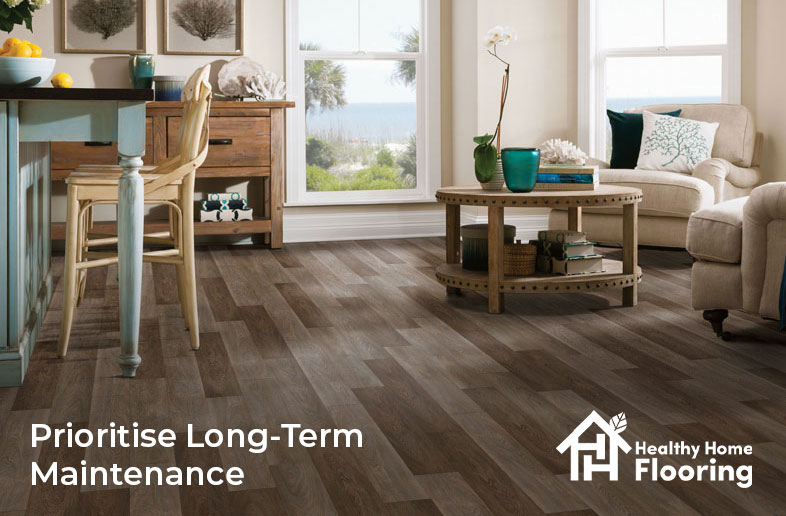
Prioritize Long-Term Maintenance
Long-term maintenance and upkeep should the primary goal of your floor cleaning regimen. Instead of opting for cheap materials that will tolerate clumsy or haphazard cleaning methods, choosing high-quality materials and employing the best possible upkeep is far more ideal. Not only will high-quality flooring appreciate with time, investing in, and properly taking care of high-quality flooring will save you more money in the long run, versus having to constantly repair or replace substandard flooring materials.
Know When to Call it Quits
There are just some things that you cannot clean on your own. In such instances, it may be best to call the help of a professional cleaning service to handle the problem for you. While you may have to spend some money for professional cleaning, you will at least avoid the more grievous mistake of ruining an otherwise still-serviceable floor. Professional help is sometimes even needed for special cases like properly cleaning vintage linoleum or period wood flooring.
Know Your Professional Cleaners
It’s always a good idea to keep tabs on several professional floor cleaning and maintenance services in your area, especially since some companies specialize in specific flooring types more so than others. Key points to consider are the equipment that a floor cleaning service has, the professionalism and promptness of their staff, and their overall expertise with regards to cleaning, preservation, maintenance and the restoration of floors.
Consider Replacement over Repair
If you’ve ever had a floor that’s beyond cleaning (or saving for that matter!) but has some sort of sentimental or aesthetic value that you just simply cannot let go, you might have contemplated repairing it, consider the cost of restoration versus conventional replacement.
Unless it’s of particular historical value or interest to anyone outside of your own circle, trying to clean or repair a floor that’s well beyond yours (or a professional’s) capacity isn’t worth the time, money, and effort you’ll put into it.
Nevertheless, it might still be a good idea to always have a little extra money on-hand in case you do need to opt for more than just professional cleaning. While floor replacement and repair may we outside the realm of conventional flooring upkeep and maintenance, they nevertheless are part and parcel of what ensures that your flooring remains in good condition for years to come.









